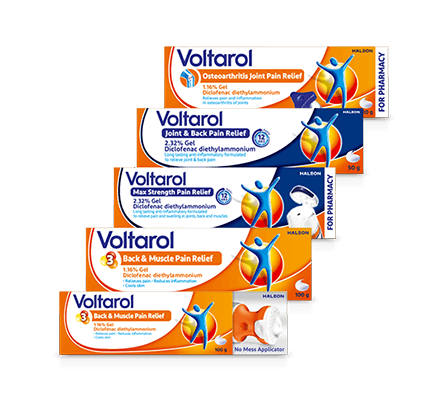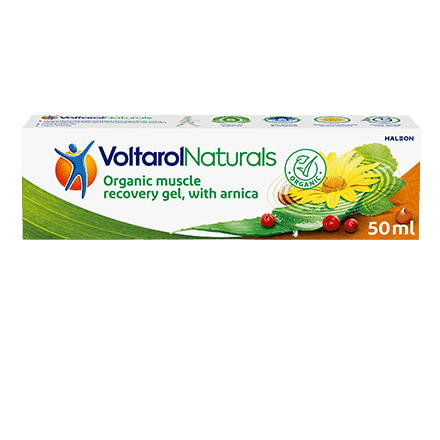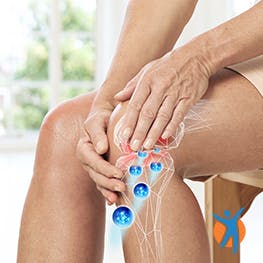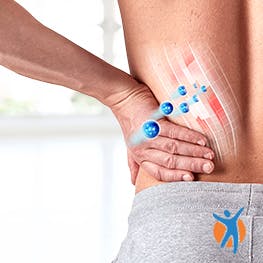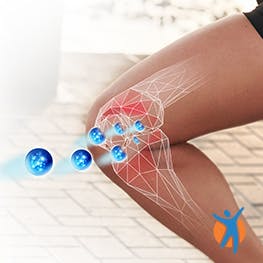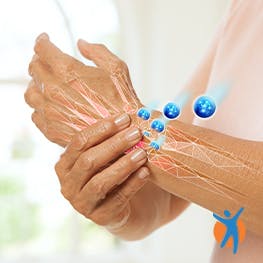There are so many different types of pain and everyone experiences it differently, so it can be hard to find the right words when talking to your doctor. Having some knowledge about pain and how to talk about it, could help you express how you feel and how bad your pain is when you have that all-important doctor’s appointment. The more the doctor understands the better able they will be to work...
What is pain?
It is fair to say, pain is not something pleasant! The official definition given by the International Association for the Study of Pain (IASP) is “an unpleasant sensory and emotional experience associated with, or resembling that associated with, actual or potential tissue damage.”
So while it may not be nice, it is a necessary way for the body to let you know that something is happening that it doesn’t like.

How do we feel pain?
Pain is caused by your nerves passing a message to your brain, via your spinal cord. Your brain interprets the pain, and tells your body how to respond to get away from, or stop the pain.
Why do things become more painful as I get older?
There is sadly no getting away from the effects of ageing – no matter how much all of us wish it were otherwise!
Bone density decreases, metabolism slows, and you begin to lose muscle mass - as much as 3 to 5 percent per decade after the age of 30. Men will lose about 30% of their total muscle mass over a lifetime.
Thanks to the wear and tear of daily life, as well as the effects of any injuries or illnesses, joints can become stiff...
Different types of pain
While pain is something that has been felt almost universally - 95% of people globally, claim to have suffered from body pain – each pain experience is individual. Understanding some of the types can make it easier to describe what you are feeling when talking to a healthcare provider. It is quite possible to suffer from more than one type of pain at a time, which can make things a little confusing, but arming yourself with knowledge is a step in the right direction.
Some of the main ones are:
- acute pain
- chronic pain
- inflammatory pain
- neuropathic pain
- nociceptive pain
Acute pain vs chronic pain |
Generally sudden, short-term pain, vs persistent, on-going pain |
Neuropathic pain vs nociceptive pain |
Pain caused by an issue in the nervous system, versus pain elsewhere in the body |
Inflammatory pain |
The body’s protective response when a specific area is damaged in some way |
Below is an overview of each of these kinds of pain and what they might feel like.
Acute pain
Acute pain normally comes on suddenly, and may be caused by illness, injury, or surgery. It can feel sharp and intense, but thankfully will go away when the reason for the pain has been dealt with, or the tissue has healed. It is important to make sure it is treated appropriately, otherwise acute pain can become chronic pain.
Examples of causes across the whole spectrum of pain are:
- Sprains
- Bruises
- Over-exertion when exercising
- Burns
- Broken bones
- Surgery
Chronic pain
It can be very draining to suffer from chronic pain, as it is persistent, and can last for months, or even years. The pain level can vary from day to day, from mild to severe. Sometimes the root cause of the pain is unknown, but other times it is due to a past injury. Frustratingly, even though you may have healed after the original injury, the pain can hang around.
Examples of causes are:
- frequent headaches
- arthritis
- back pian

Inflammatory pain
Inflammatory pain is often specific to one area, and is often described as a dull ache, sometimes accompanied by redness, swelling and the area becoming hot. Inflammatory pain is caused by the body’s protective response when the body becomes damaged in some way, and is often in the shoulder, hip or hand, as well as the lower back.
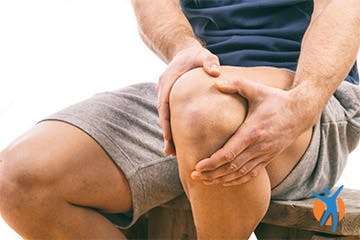
Neuropathic pain
This is a strange kind of pain, as it is basically thanks to something going wrong in the nervous system. It might be that your nerves have been damaged or are malfunctioning – think of it as though your nerves are misfiring - so while someone might be experiencing a burning, tingling, shooting, or stinging pain, there is no obvious source.

Nociceptive pain
Nociceptive pain is pain caused by damage to the body and serves a protective function. Common examples include somatic pain, such as joint, osteoarthritis, lower back pain, sports injuries and pain after surgery.
How to talk about pain
So back to that original question from the doctor: ‘Can you tell me what the pain is like?’ It may help to keep a ‘pain diary’, and your doctor might ask you to do just this too!
A pain diary is a daily note of:
- What pain you had that day, if any
- How long the pain lasted
- If the pain (or different types of pain) came and went throughout the day and night, or if it was constant
- If you felt like anything in particular caused that pain (from activities and physical exertion you did, to how you slept or what you ate, or if you were under stress)
- How it made you feel.
- It is important to rate the intensity of pain out of 10 as well; from 1 being tolerable or mild, right up to 10 when it’s unbearable. Everyone will have different scales which is why it’s really important to measure your pain, against your own past experience.
There are pain or symptom tracker apps available (differing by country or region) that can help you keep a constant record of this.
It is good to think of the words you might use to describe your pain before your appointment. Descriptive words to consider might be:
- stabbing
- tingling
- burning / freezing
- numbness
- cramping
- aching
- stinging
- shooting
When you do talk to your doctor, take the time to explain your pain and talk through your diary! They may seem busy, however, they are genuinely concerned and want to help you find the best treatment as quickly as possible, they can only know what you tell them. Then once the doctor is armed with all the information, you will be able to come up with a treatment plan together, that targets the site of your pain, whether that is using pain-relieving medication such as Voltarol, or taking steps to relieve it through methods such as exercise or physiotherapy.
Remember, finding the best way to describe the pain, helps put you back in control of it especially if it's all encompassing. Once you are in control and have a management plan, you can start to think beyond the pain, to the joy that restored movement can bring.
Treatment by pain type



